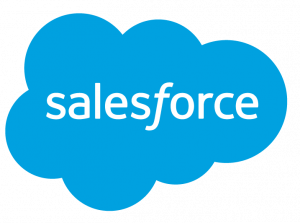In today’s world of siloed and scattered data, agencies often have an incomplete picture of their constituents. But adopting an integrated, digital data platform can vastly improve how agencies do business and interact with the public.
“Digital transformation represents such a fundamental shift in the way government entities operate, deliver services and engage with citizens,” said Nadia Hansen, Digital Transformation Executive with Salesforce, a constituent relationship management company that gives agencies a 360-degree view of their customers.
An integrated platform saves money, automates routine tasks, encourages collaboration, and allows state and local agencies to provide more personalized services. “The most fantastic benefit of digital transformation is [that] everybody’s singing from the same sheet of music,” said Anthony Young, Salesforce’s Director of Solution Engineering.
A Comprehensive Approach
Rather than buy potentially dozens of solutions to address different needs, including customer relationship management (CRM) demands, an agency can turn to Salesforce, Hansen said, and ultimately provide an “omni-channel approach to [offering] accessible government services.”
With a single, integrated platform, an organization can “build out,” she said, to accommodate various use cases — to address different licensing, health and human services, economic development, and emergency management concerns, for instance. And the agency can offer constituents online, self-guided applications and mobile-first experiences, among other features.
Case Study: State Medicaid Program
People often analyze data in a superficial way, largely because of time constraints and because data can be disorganized, Young said. But agencies that look more deeply can greatly impact lives.
A state Department of Health, for example, used an integrated platform to evaluate Medicaid recipients who frequently used emergency services for non-emergency care. Digging into the data, going beyond just the zip-code level, department employees identified a specific claimant with chronic kidney disease being treated in emergency rooms. They followed up, learning that he had no nephrologist nearby. The department recruited into the Medicaid program a new provider closer to him — which enhanced the claimant’s wellbeing, benefited the entire community and saved millions of dollars.
“The byproduct of good government,” Young said, “is the intangibles that really improve [citizens’] quality of life.”
Case Study: Town of Cary, NC
The town of Cary, North Carolina, is another instance of government “pushing the boundaries, pushing the envelope to be more innovative while maintaining efficiency,” Hansen said. Officials turned Alexa, the increasingly common Internet of Things (IoT) device, into a new contact center agent, of sorts.
Residents can use Alexa to submit service requests, report traffic problems and potholes, and lodge complaints, among other options. Based off an integrated management platform, the city uses technology to connect with constituents in a very original way.
“Having [the Salesforce] platform allows you to make it easier for citizens to interact with government and complete tasks more quickly,” said Hansen.
“You’ve got a platform that’s flexible,” Young added, “and just a much clearer path to [meeting] emerging needs.”
This article appeared in our guide, “State and Local: Making an Impact.” For more insights on how state and local governments are using digital transformation to enhance life in their communities, download it here:






Leave a Reply
You must be logged in to post a comment.